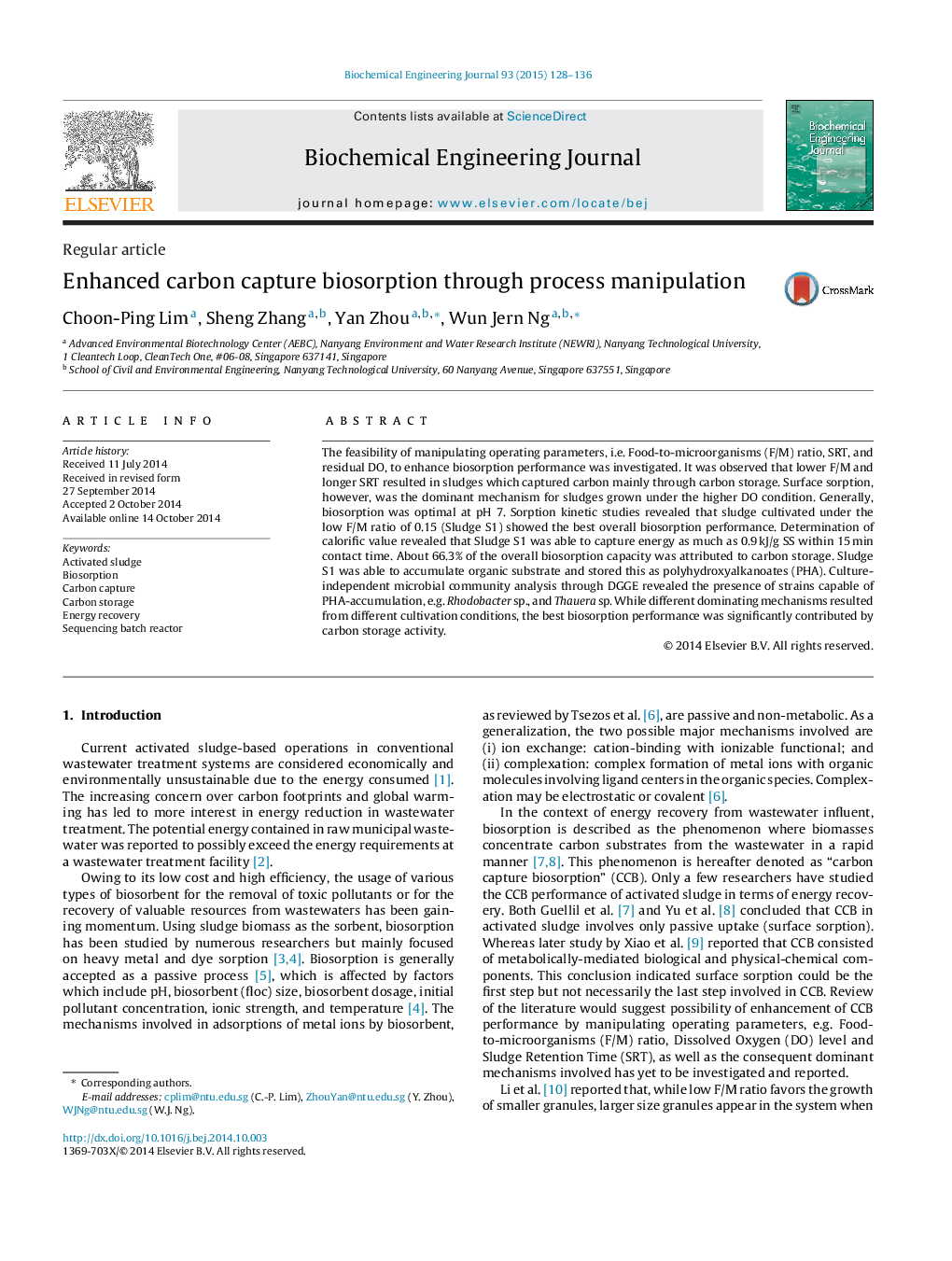| کد مقاله | کد نشریه | سال انتشار | مقاله انگلیسی | نسخه تمام متن |
|---|---|---|---|---|
| 3065 | 149 | 2015 | 9 صفحه PDF | دانلود رایگان |
• Sludges grown by lower F/M and longer SRT showed the best carbon capture capacity.
• Best carbon capture capacity was significantly contributed by carbon storage.
• The best performing sludge can capture 0.9 kJ/g SS within 15 min contact time.
• Overall capacity was enhanced 120% in the best case compared to baseline sludge.
• The feasibility of enhancing carbon capture biosorption through process manipulation was demonstrated.
The feasibility of manipulating operating parameters, i.e. Food-to-microorganisms (F/M) ratio, SRT, and residual DO, to enhance biosorption performance was investigated. It was observed that lower F/M and longer SRT resulted in sludges which captured carbon mainly through carbon storage. Surface sorption, however, was the dominant mechanism for sludges grown under the higher DO condition. Generally, biosorption was optimal at pH 7. Sorption kinetic studies revealed that sludge cultivated under the low F/M ratio of 0.15 (Sludge S1) showed the best overall biosorption performance. Determination of calorific value revealed that Sludge S1 was able to capture energy as much as 0.9 kJ/g SS within 15 min contact time. About 66.3% of the overall biosorption capacity was attributed to carbon storage. Sludge S1 was able to accumulate organic substrate and stored this as polyhydroxyalkanoates (PHA). Culture-independent microbial community analysis through DGGE revealed the presence of strains capable of PHA-accumulation, e.g. Rhodobacter sp., and Thauera sp. While different dominating mechanisms resulted from different cultivation conditions, the best biosorption performance was significantly contributed by carbon storage activity.
Journal: Biochemical Engineering Journal - Volume 93, 15 January 2015, Pages 128–136
